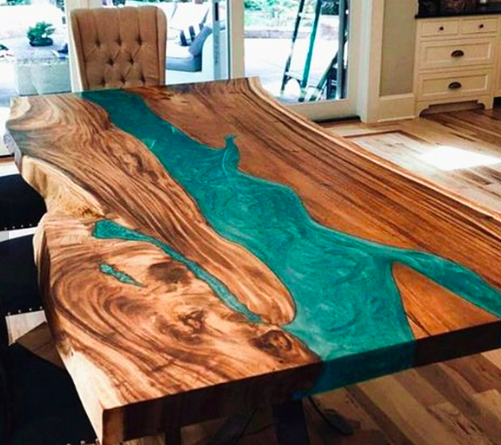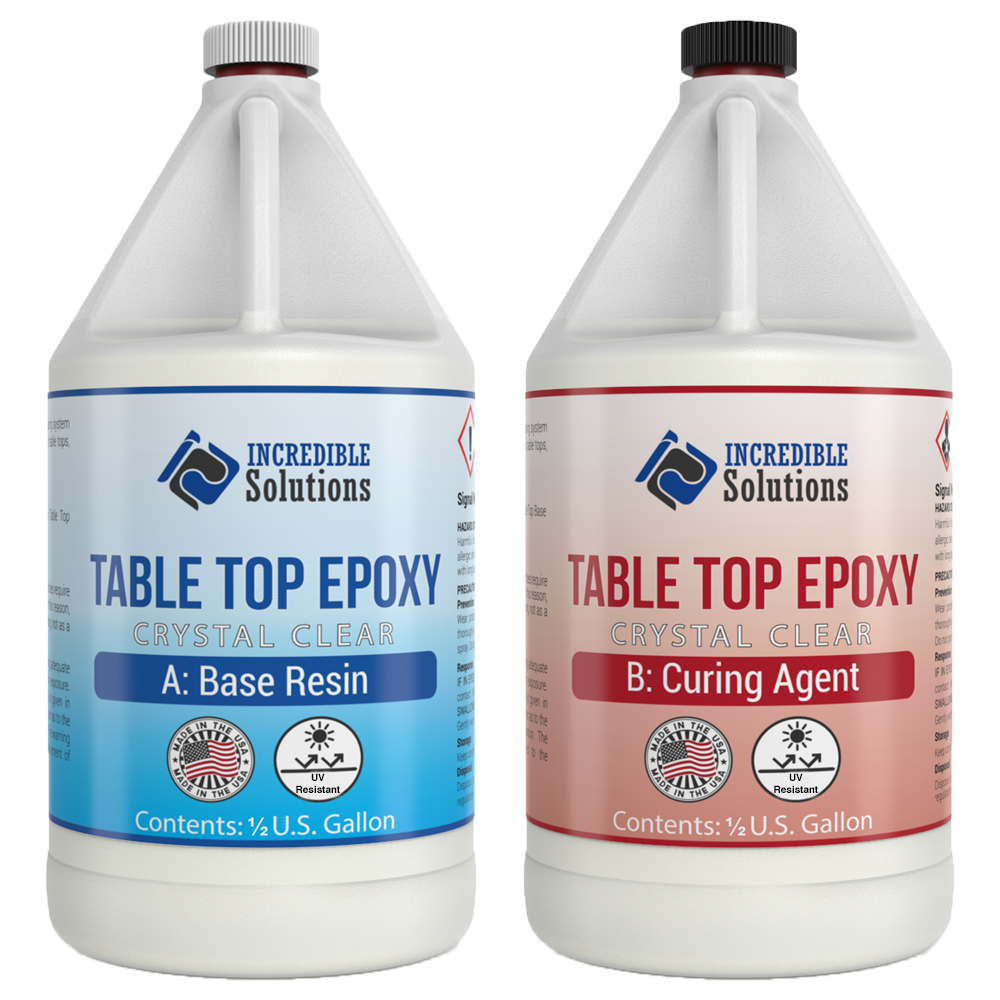Can Rsin Be Used Again After Opening
If you are doing multiple pours of epoxy to achieve your desired thickness, or perhaps the consequence of your start pour didn't come out exactly how you expected, then you may be wondering if you can epoxy over epoxy. When using epoxy, it can be a helpful procedure to add a second layer, but you want to make sure to follow the right procedures.

With most coating epoxies, if you are trying to build upwardly to your desired thickness, it is recommended to pour your second coat once the first coat is tacky to the touch on (usually 4-half dozen hours). Withal, if the coat is hard and has cured, its best to sand the surface before you re-cascade in order for the second coat of epoxy to attach to the first.
If your surface is hard to the touch, follow these steps to ready for your 2nd coat, and what to exercise to make sure that your final finish comes out nice and polish.
Tin You Sand Epoxy?
At present, yous might exist asking: can you sand epoxy? The answer is, yes. In fact, it is an important factor in being able to add together a second layer of epoxy. Yous tin too requite your surface a low-cal sanding in order to achieve less gloss/shine if you lot desire. But thats a tutorial for some other time...

Starting time, if you lot're epoxy has cured properly and is hard to the touch without imperfections, you can do a calorie-free sanding with 320-dust sandpaper in order to scuff the surface so that you tin can utilize your adjacent layer. If your epoxy has non cured properly or y'all accept imperfections, its of import to take care of these before you cascade your next layer. If your epoxy is withal tacky afterward 12 hours, it is likely didn't mix the correct ratio of resin and hardener, or you did not mix them thoroughly. In this case, you would need to remove the tacky areas and sand information technology down, otherwise the layer volition remain tacky underneath the new layer or epoxy and you risk your elevation layer not curing properly as well. This video goes into more than detail on how to do that...
Preparing for the Second Coat
When you are all done with the sanding and are happy with the smoothness and evenness of the surface, then you need to begin preparing for the awarding of the 2d glaze. To do this, you want to brand sure that y'all take a clean surface and work environment that will be free of droppings and grit. These things may stop upwardly in the epoxy as information technology dries and sticks to information technology. This will cause imperfections and may leave the particular in the layer.

Cleaning the area that you will be working in will go a long way to go on your epoxy resin clear of dirt and dust or other particles that could bear witness up in information technology once it is stale. We suggest using Isopropyl Alcohol 99%. It is of import that you use 99% as annihilation else will accept water in the booze, and epoxy and h2o do NOT mix.
After you have cleaned the area liberally, then you will want to ensure that you have a new container to mix your resin in. The container that yous used last fourth dimension, for the first coat, will non work because whatever unmixed epoxy can contaminate your side by side batch.
Get a fresh container and stirrer, and measure out the i:1 ratio precisely, or as directed past the make you are using. If this is not done well, then your resin volition not harden every bit it needs to and will end up with a sticky finish that feels wet to the touch. Once this happens, there isn't a manner to prepare information technology without adding more than resin, which costs more, then yous desire to double-check this stage every time you mix to ensure that yous are doing information technology properly and not wasting any mixed product, especially considering you won't be able to use it again.
-Top Epoxy Pick-

Pouring the 2nd Coat
When you take sanded downward the showtime coat and finished preparing for the second glaze, so you are now ready to pour on the 2nd layer of epoxy resin. When doing this, you desire to be generous with your pour so that the entire surface area is well coated with liquid and the self-leveling feature will work meliorate. Information technology is too best to mix a large amount at a time so that you tin can cascade continuously before the resin hardens, then you do not run out mid-pour.
Pro Tip: E'er take more epoxy on hand than yous think yous might need. If yous run out of epoxy in the middle of your surface, you lot cannot simply add more than to the surface later equally you will likely see a visible line where the kickoff and second pour meet.
You also want to apply a rut source to popular any air bubbling that may form while the epoxy resin is leveling out. As yous pour the mixture onto the kickoff layer, at that place may be some pockets of air that class bubbles, and using the heat source to pop them and smooth out the surface area will stop the resin from starting to harden, which can proceed the bubble in place and enable you to see the air chimera in the finished coat.
Then, you volition allow the second layer cure for 12-24 hours. You can continue this process to build the coat to your desired thickness.
Conclusion
Adding a second layer of epoxy resin can be a great way to set up leveling bug, get rid of imperfections, build up the thickness and ensure that your surface has hardened properly and so that yous have a solid surface once the resin has fully cured. Post-obit these tips volition ensure that you get the best results so that your project comes out as proficient as possible.
Source: https://liquidglassepoxyresin.com/can-you-epoxy-over-epoxy-how-to-apply-a-second-coat-of-resin/
0 Response to "Can Rsin Be Used Again After Opening"
Post a Comment